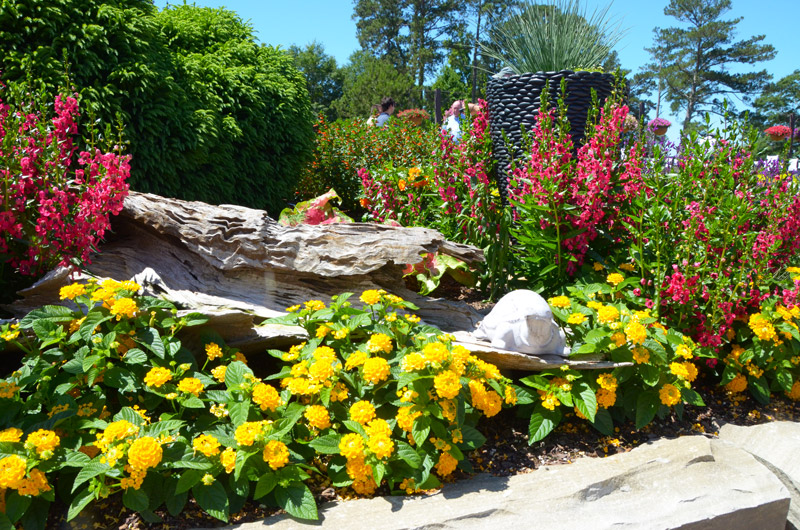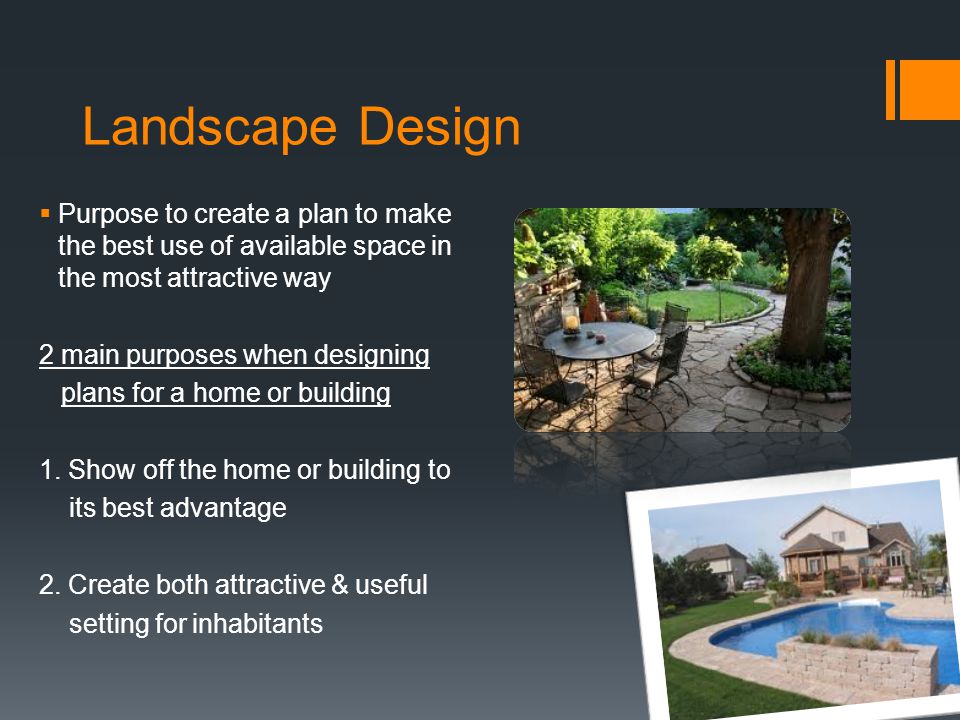What Does Hilton Head Landscapes Mean?
What Does Hilton Head Landscapes Mean?
Blog Article
The smart Trick of Hilton Head Landscapes That Nobody is Discussing
Table of ContentsA Biased View of Hilton Head LandscapesSome Known Details About Hilton Head Landscapes Top Guidelines Of Hilton Head Landscapes4 Easy Facts About Hilton Head Landscapes ExplainedSome Known Factual Statements About Hilton Head Landscapes Rumored Buzz on Hilton Head LandscapesHilton Head Landscapes Fundamentals Explained
Line produces all types and patterns and can be utilized in a range of means in the landscape. Line in the landscape is produced by the edge in between two products, the overview or silhouette of a type, or a long linear attribute. Lines are a powerful tool for the developer because they can be utilized to create a limitless selection of forms and forms, and they regulate activity of the eye and the body.

Lines can have several characteristics, such as those explained below, yet they commonly offer different purposes. Number 1. Lines in the landscape - landscapers hilton head island. The residential or commercial properties of lines determine how individuals react to the landscape, both mentally and literally. Straight lines are structural and forceful; they develop an official personality, are normally related to a symmetrical layout, and lead the eye straight to a focal factor.
The Basic Principles Of Hilton Head Landscapes
Straight lines are usually found in hardscape sides and product. Curved lines produce a casual, all-natural, unwinded personality that is linked much more with nature and asymmetrical balance. Curved lines relocate the eye at a slower rate and add secret to the area by developing hidden views. Vertical lines move the eye up, making an area feel bigger.
Vertical lines in the landscape include high, slim plant product, such as trees, or tall frameworks, such as an arbor or a bird residence on a post. Straight lines move the eye along the ground plane and can make a room feel larger. Reduced lines are more controlled and produce a sensation of rest or repose.
Not known Facts About Hilton Head Landscapes
Reduced lines are developed by reduced yard wall surfaces, sidewalks, and short bushes. Lines are used to attract kinds on a strategy. In strategy sight, they define plant beds and hardscape locations. Lines are additionally produced by the vertical types of constructed functions and plant material. There are 3 key line types that develop form in the landscape: bedlines, hardscape lines, and plant lines.
Bedlines attach plant product to your home and hardscape due to the fact that the eye follows the line, moving the look via the landscape. Hardscape lines are developed by the side of the hardscape, which delineates the constructed structure. Line can additionally be produced by lengthy and narrow products, such as a fence or wall.
Not known Incorrect Statements About Hilton Head Landscapes
Type is discovered in both hardscape and plants, and it is usually the leading visual aspect that spatially arranges the landscape and usually identifies the style of the yard. The kind of frameworks, plant beds, and yard ornaments also figures out the general kind motif of the garden. Formal, geometric types consist of circles, squares, and polygons.
Plants develop form in the yard via their outlines or silhouettes, however type can also be specified by a space or negative space between plants - Landscaping bluffton sc (https://h1tnhdlndscps.carrd.co). Circles can be cycles, or they can be divided right into fifty percent circles or circle sectors and incorporated with lines to develop arcs and tangents
A Biased View of Hilton Head Landscapes
Circles can also be stretched into ovals and ellipses for even more range and rate of interest. Circles are a solid layout type due to the fact that the eye is always drawn to the facility, which can be used to emphasize a centerpiece or attach other kinds. Number 2. Round kinds in hardscape and yard panels.
The square kind can also be fractional and used consistently to develop a grid pattern. Unlike circles, squares are stronger on the edges, which can be lined up or overlapped to produce unique patterns and more intricate forms.
Meandering lines often simulate the all-natural course of rivers or streams and can be called smooth lines with deeply bent wavinesses. Meandering lines (Figure 3) function well for pathways, plant bedlines, and dry stream beds. Twisting lines can include passion and mystery to a garden by leading customers around edges to uncover new views and areas.
The 8-Minute Rule for Hilton Head Landscapes

Figure 5. Fragmented edges: stepping stones in pathway. Type is the most enduring high quality of a plant (bluffton landscaping). https://h1tnhdlndscps.start.page. Typical plant types are well developed and standard, as type is the most consistent and recognizable quality of plants. Form can also be created through the massing of plants, where the overall mass creates a different kind than a specific plant.
A very different type must be used with careone or more job well as a focal point, but a lot of produce chaos. All-natural plant types, instead of over-trimmed kinds, must establish the mass of the structure. The significance of overall form is extra or less dependent on the watching perspectivethe type of a tree can show up rather different to an individual standing under the cover versus seeing the tree from a distance in an open area.
Some Known Details About Hilton Head Landscapes
Plant kinds also produce and specify deep space or open spaces between the plants, developing either convex or scooped forms in deep spaces. High-arching tree branches generally produce a concave open room under the branches, and a rounded canopy with low branches fills up the area to develop a convex form in the open area under the tree.

Report this page